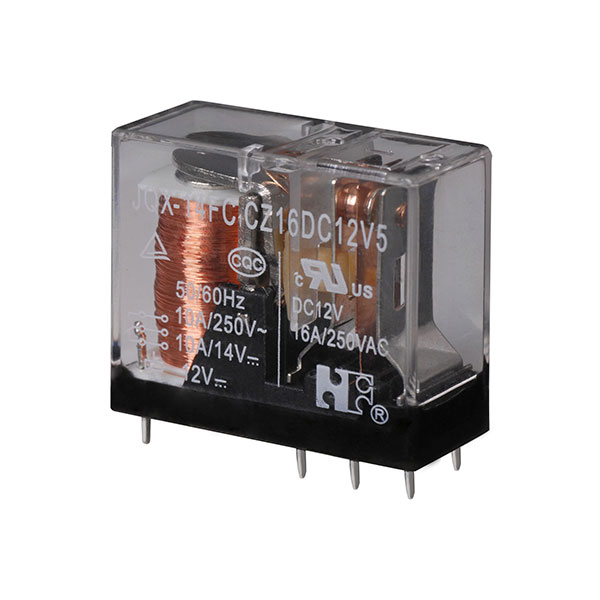What are the application of relay in industry?
2024-06-26
Relays are widely used in various industrial applications due to their ability to control large electrical loads with small control signals. They provide isolation, protection, and control in many systems. Here are some common industrial applications of relays:

1. Control Systems
- Motor Control: Relays are used to start, stop, and control the direction of motors in industrial machinery and conveyor systems.
- Lighting Control: Relays enable the control of large lighting systems in factories and warehouses.
- Heating and Cooling Systems: Used to control heaters, air conditioners, and ventilation systems.
2. Automation Systems
- Programmable Logic Controllers (PLCs): Relays are integrated with PLCs to control various industrial processes and machinery.
- Robotics: Relays control actuators, sensors, and motors in robotic systems.
3. Power Management
- Load Shedding: Relays are used to disconnect non-essential loads during peak power demand to prevent overloading.
- Automatic Transfer Switches (ATS): Used in backup power systems to switch between the main power source and a generator.
- Energy Metering: Relays control power flow and measure energy usage in industrial settings.
4. Safety Systems
- Emergency Shutdown Systems: Relays are used in safety circuits to immediately shut down machinery in case of emergency.
- Overload Protection: Protect motors and other equipment from damage by interrupting the circuit in case of overload conditions.
- Interlock Systems: Ensure that machines and systems operate in a safe sequence and prevent accidental operation.
5. Signal and Data Transmission
- Signal Isolation: Relays isolate low-voltage control signals from high-voltage power circuits.
- Data Communication: Used in communication systems to route signals and manage data flow.
6. Industrial Process Control
- Temperature Control: Relays control heaters, coolers, and other temperature-regulating devices in process control systems.
- Flow Control: Used in controlling pumps and valves in fluid and gas flow systems.
- Level Control: Manage the operation of pumps and alarms in tank level control systems.
7. Telecommunications
- Switching Systems: Relays are used in switching and routing signals in telecommunications networks.
- Line Protection: Protect communication lines from surges and faults.
8. Transport Systems
- Railway Signaling: Relays control railway signals, track switching, and safety systems.
- Traffic Control: Manage traffic lights and signaling systems in road networks.
9. Energy Sector
- Substation Control: Relays are used in power substations for switching and protection.
- Grid Management: Manage the distribution and protection of electrical grids.
10. Testing and Measurement
- Test Equipment: Relays are used in automated test equipment to switch test signals and measure various parameters.
- Instrumentation: Control and isolate signals in measurement and instrumentation systems.
Types of Relays Used in Industry
1. Electromechanical Relays: Traditional relays with mechanical contacts, used for general-purpose switching.
2. Solid State Relays (SSRs): Use semiconductor components to switch without moving parts, offering faster switching and longer life.
3. Reed Relays: Use a pair of magnetic reeds enclosed in a glass tube, suitable for low-current applications.
4. Thermal Relays: Protect motors and other equipment by detecting overheating conditions.
5. Time Delay Relays: Provide delayed switching action, used in timing and sequencing applications.
6. Overload Relays: Protect motors from overload conditions by interrupting the circuit when the current exceeds a preset limit.
7. Safety Relays: Ensure the safe operation of machinery by monitoring safety-critical functions.
Summary
Relays play a crucial role in industrial automation, control, protection, and safety. They provide reliable and efficient switching solutions for a wide range of applications, from simple lighting control to complex process automation systems. By understanding the specific requirements of an application, the appropriate type of relay can be selected to ensure optimal performance and safety.


